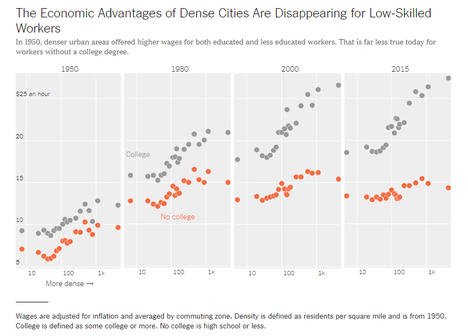(p. A25) Evelyn Berezin, a computer pioneer who emancipated many a frazzled secretary from the shackles of the typewriter nearly a half-century ago by building and marketing the first computerized word processor, died on Saturday [December 8, 2018] in Manhattan. She was 93.
. . .
In an age when computers were in their infancy and few women were involved in their development, Ms. Berezin (pronounced BEAR-a-zen) not only designed the first true word processor; in 1969, she was also a founder and the president of the Redactron Corporation, a tech start-up on Long Island that was the first company exclusively engaged in manufacturing and selling the revolutionary machines.
To secretaries, who constituted 6 percent of the American work force then, Redactron word processors arrived in an office like a trunk of magic tricks, liberating users from the tyranny of having to retype pages marred by bad keystrokes and the monotony of copying pages for wider distribution. The machines were bulky, slow and noisy, but they could edit, delete, and cut and paste text.
Modern word processors, which appear as programs on computers, long ago simplified the tasks of authors, journalists and other writers — sometimes after misgivings over the risk of surrendering to a future of dystopian technology — but became so efficient in offices that they killed off the need for most of the old-fashioned secretarial skills Ms. Berezin was trying to enhance.
“I’m embarrassed to tell you that I never thought of it — it never entered my mind” that the word processor might endanger women’s jobs, Ms. Berezin said in an interview for this obituary in 2017. Though she was not an ardent feminist, she said, her first ad for the Redactron word processor was placed in Ms. magazine in 1971, hailing “the death of the dead-end secretary.”
. . .
Even in her Redactron heyday, Ms. Berezin was hardly alone in the word processing business. Her chief competitor, International Business Machines, made devices that relied on electronic relays and tapes, not semiconductor chips. I.B.M. soon caught up technologically and swamped the market in the 1970s and ′80s, pursued by a herd of brands like Osborne, Wang, Tandy and Kaypro.
But for a few years after Redactron started shipping its computerized word processors in September 1971, Ms. Berezin was a lioness of the young tech industry, featured in magazine and news articles as an adventurous do-it-herself polymath with the logical mind of an engineer, the curiosity of an inventor and the entrepreneurial skills of a C.E.O.
In a 1972 profile in The New York Times, the business writer Leonard Sloane wrote: “Miss Berezin, a serious, soft-spoken individual, nevertheless talks at times like a systems engineer (which she is), a sales executive (which she is) and a proponent of a sophisticated product (which she is). She is also obviously a woman on the senior level of a field where her sex are still a rarity at any level.”
Early in her career, Ms. Berezin designed numerous single-purpose computer systems. They calculated the firing ranges of big guns, controlled the distribution of magazines, kept accounts for corporations and automated banking transactions. She also claimed credit for the world’s first computerized airline reservations system.
“Why is this woman not famous?” the British writer and entrepreneur Gwyn Headley asked in a 2010 blog post.
“Without Ms. Berezin,” he added enthusiastically, “there would be no Bill Gates, no Steve Jobs, no internet, no word processors, no spreadsheets; nothing that remotely connects business with the 21st century.”
Credit for her early achievements does appear to have faded with time, perhaps under the obliterating speed of technological change, the greater notice paid to her corporate competitors, and the tendency of the tech world to diminish the accomplishments of women.
For the full obituary, see:
Robert D. McFadden. “Evelyn Berezin, Computer Pioneer Who Built First Word Processor, Dies at 93.” The New York Times (Tuesday, Dec. 11, 2018): A25.
(Note: ellipses, and bracketed date, added.)
(Note: the online version of the obituary has the date Dec. 10, 2018, an has the title “Evelyn Berezin, 93, Dies; Built the First True Word Processor.”)
The book mentioned as a source above, is:
Kirschenbaum, Matthew G. Track Changes: A Literary History of Word Processing. Cambridge, MA: Belknap Press, 2016.


